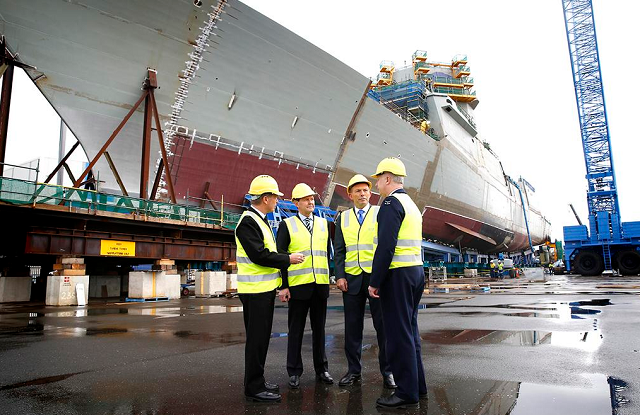The government’s announcement of an ‘$89 billion shipbuilding program’ today is bold on two fronts. First, in the implicit assumption that much of the price premiums paid on past and current projects and the poor performance—by any reasonable measure—of the Air Warfare Destroyer program are mostly artefacts of the recent ‘boom and bust’ cycle of naval shipbuilding. Second, by committing to a continuous build of surface combatants, the government has placed a large bet on the continuing relevance of surface vessels in an age of precision targeting.
While neither of those propositions is demonstrably wrong, both are at least questionable. Let’s start with the surface combatant question. Both the Rudd and Abbott governments have exhibited a broad support for aligning Australia’s military capabilities with the US, especially at sea. The 2009 Defence White Paper talked up the future frigate program and an expanded submarine fleet as vital responses to the changing power balance in the Asia–Pacific—a thinly disguised response to increased Chinese naval power.
Of course, the 2009 White Paper was never delivered on, but the current government shows every sign of following the same path to a larger and more capable navy, albeit with more surface combatants and (perhaps) fewer submarines. But if support of the US is one of the aims, we should think carefully about the best way to contribute to alliance sea power and take note of the USN’s own strategic directions.
The USN has made a significant effort in recent years to maintain its numbers of submarines in build, even at a time of significant budget pressures. It even considered cutting its number of nuclear aircraft carriers before it was overruled by Congress. At the same time, the highest priorities for the service are continued acquisition of Virginia class submarines, a replacement for the nuclear missile Ohio class boats and ‘maintaining undersea dominance‘. That’s not surprising. Modern naval warfare has to take into account precision targeting, enabled in part by space based surveillance systems that allow ‘over the horizon’ shots. As well, a diverse combination of stand-off cruise and ballistic missile systems will make life on the surface much harder.
As far as the industry side of shipbuilding goes, we’ve written a lot on the topic over the years, most recently a few weeks ago, and—to be blunt—we’re far from convinced of the soundness of a continuous build program. But beyond that overarching point, it’s difficult to say much more given the paucity of detail in today’s announcements.
What we do know is that the Future Frigate project (SEA 5000) will be brought forward by two years to allow a continuous-build program to commence in 2020. In addition, the Offshore Patrol Vessel project (SEA 1180) will also be brought forward by two years to allow a continuous build program to commence in 2018. A Competitive Evaluation Processes (i.e. ‘beauty contests‘) will be held for each program. By bringing the programs forward and commencing continuous-build programs, it’s anticipated that efficiencies will be achieved along the lines outlined in the recent RAND shipbuilding report (a critical analysis of the report can be found here).
Frustratingly, we weren’t told how many vessels of each class will be built, nor the frequency with which they will be built. As a result, we don’t know how a continuous-build program will be achieved in either instance. Will the fleet expand to accommodate a continuous-build scheme, or will the life-of-type be cut to allow more frequent replacement? Either way, there’ll be substantial additional costs; which might explain why the notion of twelve future submarines seems to have morphed into acceptance of a fleet of only eight.
The government also announced today, a ‘strategic review’ of ASC’s shipbuilding capacity, the results of which will be ‘considered in conjunction with future decisions on submarines and surface shipbuilding programme’. That means that the government is yet to come to grips with the long list of things that will have to be done in setting up a continuous-build program. Key questions include:
- What will happen to ASC? Will it be sold or retained in government hands as a Government Business Enterprise (GBE) or, perhaps, reestablished as a Government Owned Corporately Operated (GOCO)?
- If ASC is sold, will it be sold intact or broken up into its submarine and shipbuilding component?
- How will the resulting shipbuilding monopolies be managed? What will stop the private sector monopolies from delivering public sector productivity while booking private sector profits?
The government also announced its next steps for the troubled AWD program. With a turn of phrase befitting Sir Humphrey Appleby, we were told that ‘an additional $1.2 billion will be invested in the programme budget’. Unless the government gets the details right in its ambitious $89 billion plan for naval shipbuilding, we might find ourselves making similar ‘investments’ in the years ahead.


